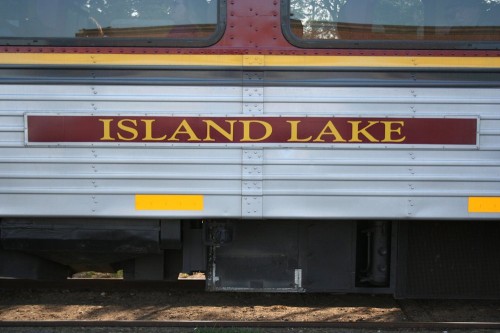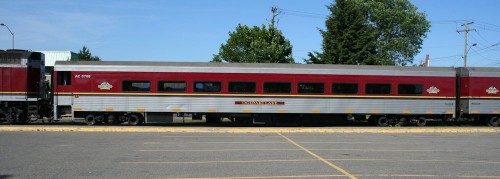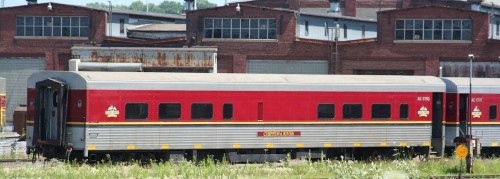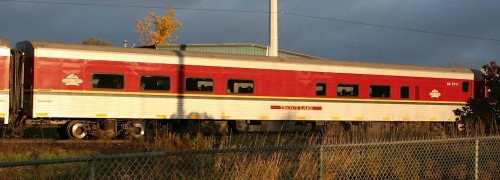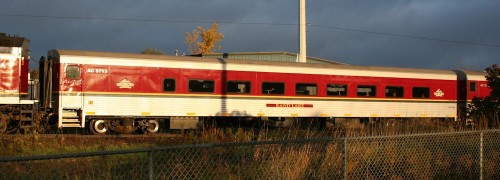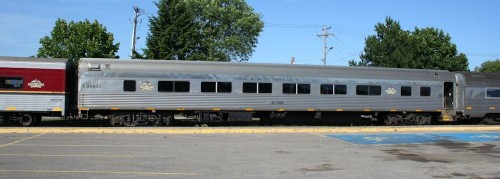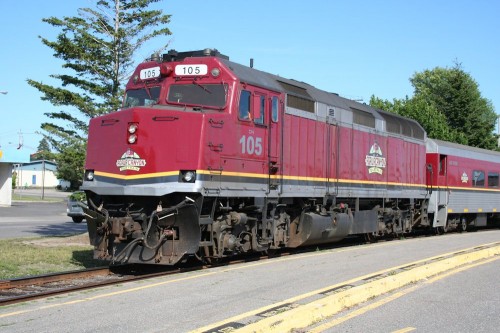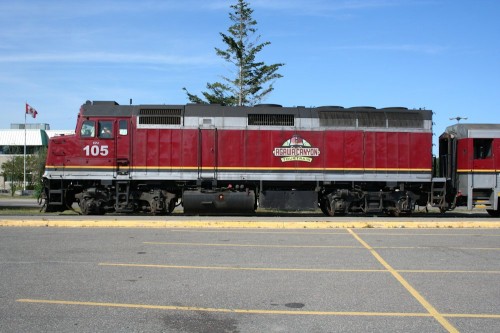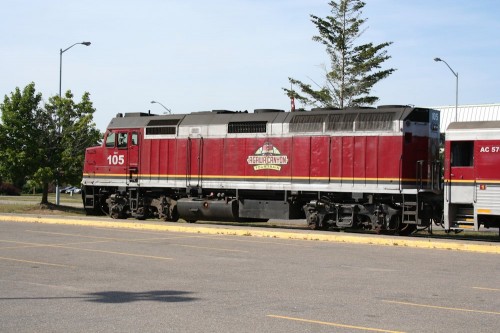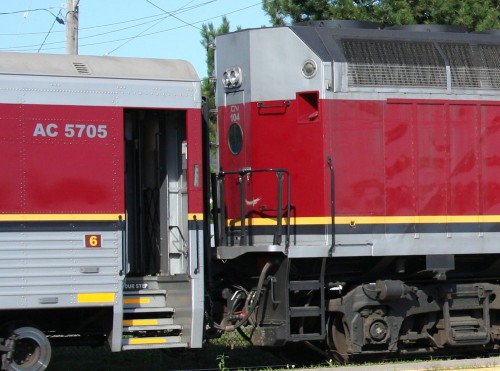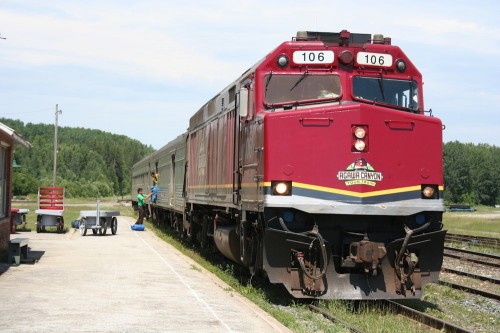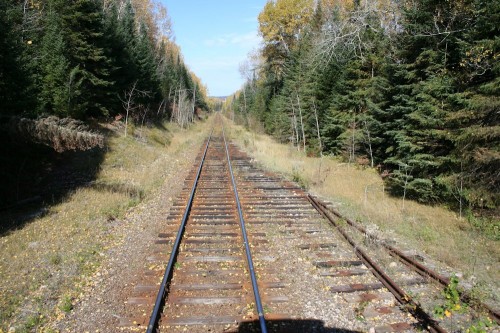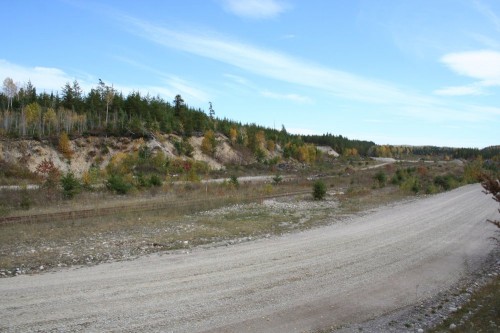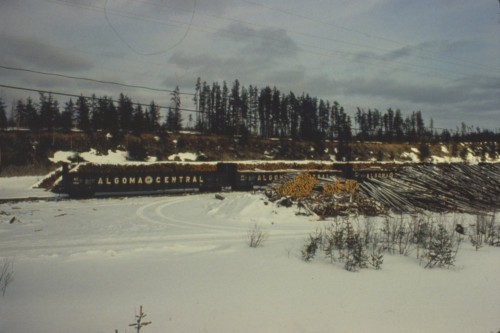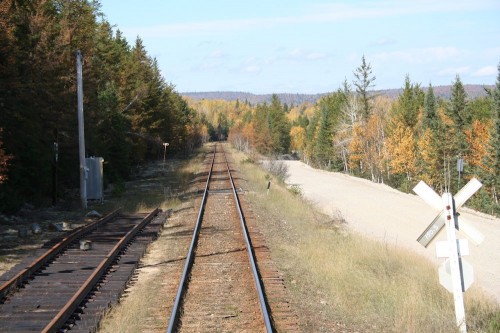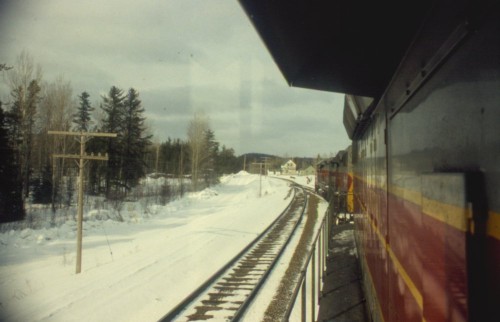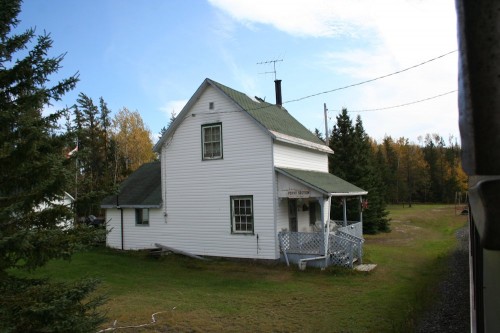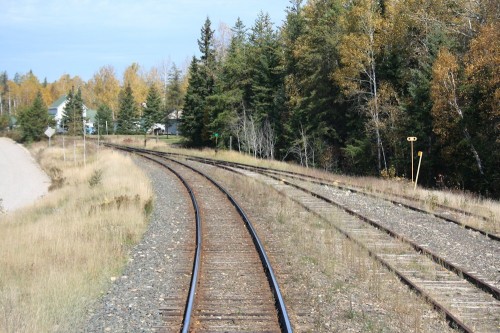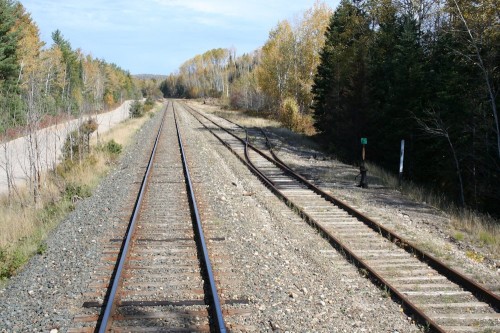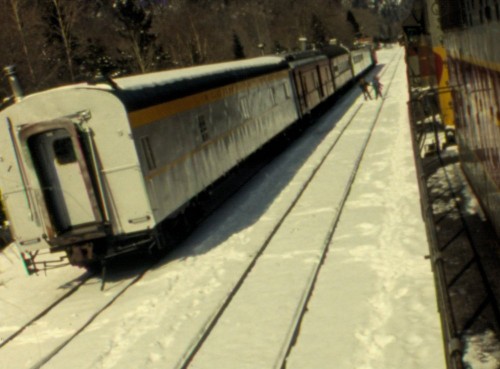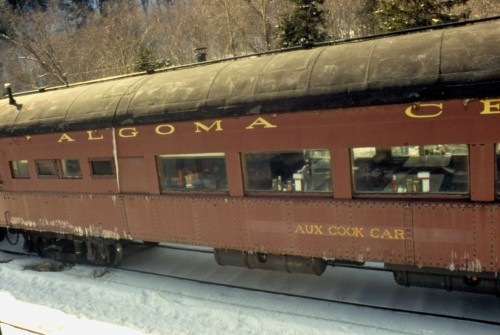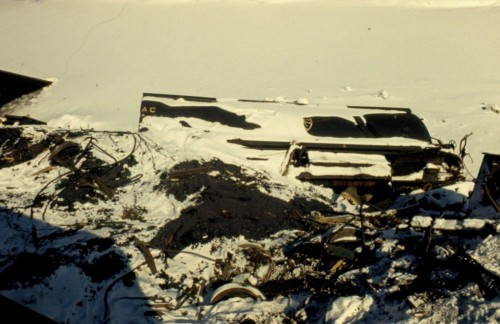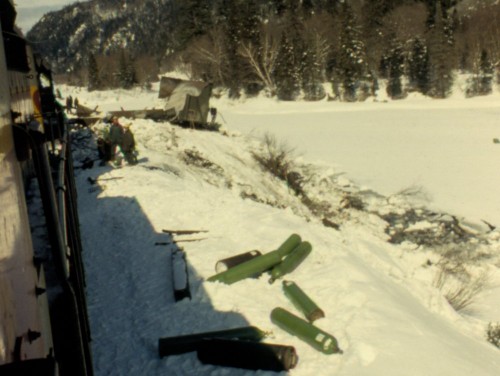In 2009, CN acquired the equipment of the former Ski Train out of Denver, Colorado. This purchase included 3 F40PH locomotives, and 14 passenger cars, which ironically were originally built in 1968 for CN.
The new equipment was rushed into service for the 2009 season to replace the aging former VIA/CN steel coaches which had been built in the early 1950s. During 2010-2011 the new passenger cars were extensively refurbished, entering service for the 2011 season with new windows, upgraded interiors, and internal TV display monitors that could display a live cab view from video cameras mounted in the locomotive cab as well as GPS-triggered audio narration providing information about various features and locations along the route. As the cars were refurbished they were repainted in a handsome new interpretation of the ACR’s wine red and grey passenger colours, and lettered with new Agawa Canyon Tour Train logo decals, although unfortunately while the coaches carry AC numbers (but the engines bear CN reporting marks) the Algoma Central name is not present.
Except for the Tour Train logos, lettering on the cars is completely minimal, with just the car number at one end of the car in light grey lettering.
However, each car is named after a local river or lake, with the car name on a lettering panel on the lower portion of the car body.
Roster
| Number | Name | Type | Lineage |
|---|---|---|---|
| AC 5700 | Achigan Lake | Coach | ex-SKTX 2, ex-DRGW 430, ex-VIA 355, ex-VIA 376, ex-CN 376 |
| AC 5701 | Montreal River | Coach | ex-SKTX 3, ex-DRGW 431, ex-VIA 350, ex-VIA 363, ex-CN 363 |
| AC 5702 | Lake Superior | Coach | ex-SKTX 4, ex-DRGW 441, ex-VIA 362, ex-CN 362 |
| AC 5703 | Chippewa Lake | Cafe-Lounge | ex-SKTX 5, ex-DRGW 420, ex-VIA 341, ex-CN 341 |
| AC 5704 | Island Lake | Coach | ex-SKTX 6, ex-DRGW 442, ex-VIA 366, ex-CN 366 |
| AC 5705 | Spruce Lake | Coach | ex-SKTX 7, ex-DRGW 432, ex-VIA 351, ex-VIA 361, ex-CN 361 |
| AC 5706 | Batchewana River | Coach | ex-SKTX 8, ex-DRGW 443, ex-VIA 373, ex-CN 373 |
| AC 5707 | Hubert Lake | Cafe-Lounge | ex-SKTX 9, ex-DRGW 421, ex-VIA 342, ex-CN 342 |
| AC 5708 | Ogidaki Lake | Coach | ex-SKTX 10, ex-DRGW 444, ex-VIA 371, ex-CN 371 |
| AC 5709 | Mongoose Lake | Coach | ex-SKTX 11, ex-DRGW 433, ex-VIA 353, ex-VIA 364, ex-CN 364 |
| AC 5710 | Agawa River | Presentation | ex-SKTX 12, ex-DRGW 440, ex-VIA 375, ex-CN 375, ex-CN 320 |
| AC 5711 | Trout Lake | Club Car | ex-SKTX 13, ex-DRGW 425, ex-VIA 321, ex-CN 321 |
| AC 5712 | Goulais River | Club Car | ex-SKTX 14, ex-DRGW 426, ex-VIA 322, ex-CN 322 |
| AC 5713 | Rand Lake | Club Car | ex-SKTX 15, ex-DRGW 427, ex-VIA 323, ex-CN 323 |
Coach Cars
Cafe-Lounge Cars
Club Cars
Other Cars
In addition to the 14 ex-Ski Train cars, coach 5655 was reconditioned in 2010 or 2011 for use on the Agawa Canyon Tour Train. 5655 is one of three ex-Amtrak coaches acquired by the Algoma Central in 2007 for use on the regular passenger service. These three cars were originally built in 1953 by Budd for the Santa Fe. Upgraded by Amtrak, these three coaches were equipped to use head-end power, and on the ACR local passenger service ran with an electrical generator car.
This single coach was refurbished with the same upgrades as the ex-Ski Train cars and features Agawa Canyon Tour Train logos indicating its assignment to this train. The other two former Santa Fe coaches, AC 5654 and 5656, do not have these internal upgrades or the tour train logos and are not used on the Canyon train. Otherwise, their external appearance is similar to the 5655.
However with the announcement of the termination of the regular passenger service, perhaps these two cars (5654/5656) may also end up being reconditioned for the tour train to provide more capacity during the fall peak season? With the 14 Ski Train cars and the 5655, the railway has a maximum of 15 cars (plus the diner below) that can be used on the tour train, while 30 years ago the Algoma Central could sometime run over two dozen coaches on the Canyon Tour Train, and be required to rent extra coaches from VIA and Ontario Northland in order to cover the needs of the regular passenger service.
Dining car 506 was acquired by the Algoma Central Railway in 1998 to replace a previous dining car, number 504, which had suffered damage from a kitchen fire. AC 506 was originally built in 1938 by Budd as Chicago, Burlington & Quincy 190 “Silver Pheasant” for service on the famed “California Zephyr”.


